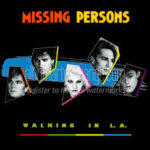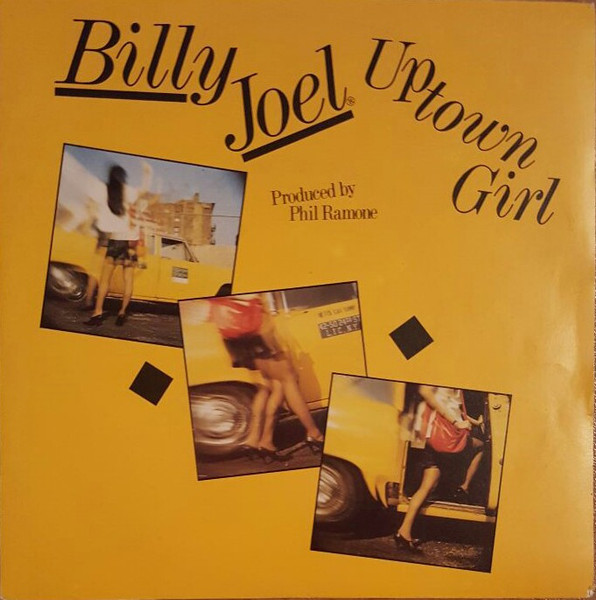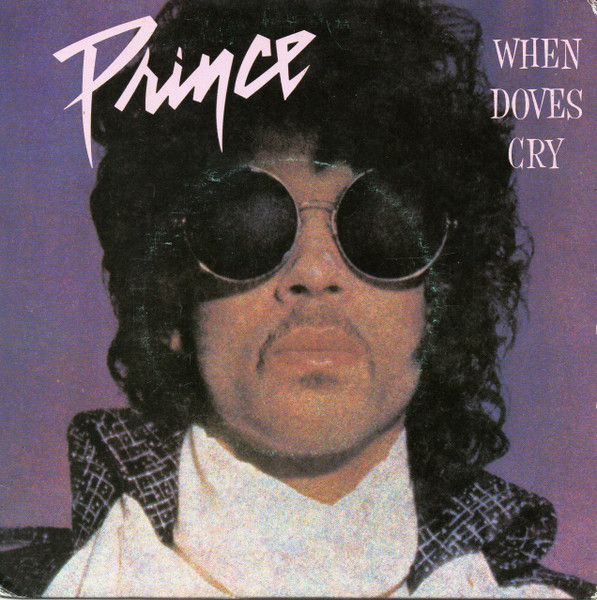 Los Angeles is often imagined as a city of perpetual motion, a sun-soaked metropolis where ambition and vanity collide, and where personal mobility often comes second to the convenience of cars. Capturing this paradox with biting wit and irresistible new wave energy, Missing Persons released “Walking in L.A.” in 1982, a song that remains a clever, enduring snapshot of urban irony. With its catchy synth lines, staccato rhythms, and Dale Bozzio’s distinctively playful vocals, the track lampoons the car-dependent culture of Los Angeles while celebrating the quirky charm of the band’s innovative sound. Unlike many songs that romanticize the city, “Walking in L.A.” embraces satire, highlighting the absurdity of a place where walking is both rare and noteworthy.
Los Angeles is often imagined as a city of perpetual motion, a sun-soaked metropolis where ambition and vanity collide, and where personal mobility often comes second to the convenience of cars. Capturing this paradox with biting wit and irresistible new wave energy, Missing Persons released “Walking in L.A.” in 1982, a song that remains a clever, enduring snapshot of urban irony. With its catchy synth lines, staccato rhythms, and Dale Bozzio’s distinctively playful vocals, the track lampoons the car-dependent culture of Los Angeles while celebrating the quirky charm of the band’s innovative sound. Unlike many songs that romanticize the city, “Walking in L.A.” embraces satire, highlighting the absurdity of a place where walking is both rare and noteworthy.
Emerging from the early 1980s new wave scene, Missing Persons combined elements of punk, pop, and electronic music into a distinctive style marked by tight musicianship and theatrical flair. “Walking in L.A.” perfectly encapsulates their approach: clever, energetic, and slightly off-kilter. Bozzio’s vocals deliver irony with a wink, narrating a world where the mere act of walking is considered a spectacle, and where societal obsession with automobiles creates a humorously distorted urban reality. The song’s theme, playful yet socially observant, resonates beyond Los Angeles, reflecting broader notions of urban culture, convenience, and human behavior in modern cities.
Missing Persons and the New Wave Revolution
Formed in 1980, Missing Persons was spearheaded by the striking duo of Dale Bozzio (vocals) and her husband Warren Cuccurullo (guitar, synthesizers), alongside Terry Bozzio on drums. The band was initially an offshoot of Frank Zappa’s complex musical universe, as both Warren and Terry had worked with Zappa, bringing a technical sophistication and experimental edge to their own work. This foundation gave Missing Persons a unique advantage: they could craft music that was simultaneously catchy, intricate, and eccentric.
“Walking in L.A.” came during the band’s early years, as they were refining their sound and developing their identity within the burgeoning new wave movement. This era was defined by synthesizers, quirky song structures, and an emphasis on image and theatricality—all elements Missing Persons utilized to their advantage. The song’s sharp rhythms, punchy synth lines, and Bozzio’s high-pitched, theatrical vocals positioned it as a standout track on their repertoire, offering both danceability and commentary.
Lyrics That Combine Humor and Social Commentary
The genius of “Walking in L.A.” lies in its clever observation of city life, where walking is treated as an almost subversive activity in a car-dominated environment. Lyrics like:
“Nobody walks in L.A., nobody walks in L.A.”
repeated throughout the track, are both humorous and critical. On the surface, it’s a simple observation, but it cleverly critiques urban sprawl, dependency on cars, and the absurdity of a society that prioritizes convenience over movement.
Bozzio’s delivery adds layers to the lyrics, as her playful tone transforms a mundane observation into a cultural critique. The repetition emphasizes the satirical core, turning a simple line into a rallying cry that highlights the city’s contradictions. There’s also a universal quality to the humor: while the song is rooted in Los Angeles, it resonates with anyone familiar with the quirks and inefficiencies of urban life, where car culture dominates and walking is an afterthought.
Musical Structure and Style
Musically, “Walking in L.A.” exemplifies early 1980s new wave with a distinctive Missing Persons twist. The track opens with a tight, pulsating synth line that immediately establishes a kinetic energy, evoking both the pace of the city and the ironic tension of the lyrics. Bozzio’s vocals are layered and rhythmically playful, adding a sense of performance and theatricality that complements the song’s satirical tone.
Warren Cuccurullo’s guitar work adds angular textures, often punctuating the melody with staccato riffs that enhance the song’s quirky, ironic character. Terry Bozzio’s drumming is precise and dynamic, propelling the track forward with a syncopated energy that mirrors the city’s bustle. The production balances clarity with punch, ensuring that each instrument supports the narrative while contributing to the song’s overall infectiousness.
The chorus is the song’s standout moment: simple, memorable, and rhythmically tight. Its repetitive structure reinforces the comedic message, making it easy for listeners to chant along, which has helped the song endure as both a musical and cultural touchstone. The brevity of the track—just over three minutes—further enhances its punchy, immediate impact, making it a perfect encapsulation of the new wave ethos: concise, clever, and catchy.
Cultural Context and Satire
“Walking in L.A.” emerged during a period when Los Angeles was rapidly growing and evolving. The city’s culture of car-centric urban planning, sprawling freeways, and emphasis on image over practicality provided fertile ground for satire. Missing Persons captured this environment with precision, lampooning the very behaviors that defined the city while still celebrating its unique character.
The song’s humor is both lighthearted and incisive. By exaggerating the notion that nobody walks in L.A., the band invites listeners to reflect on the absurdities of modern urban life. It’s a social commentary disguised as a danceable track, one that remains relevant as car culture and urban sprawl continue to shape cities around the world.
Moreover, “Walking in L.A.” reflects the broader ethos of new wave music, which often embraced irony, theatricality, and social observation. Bands like Talking Heads, Blondie, and Devo similarly infused their music with humor and commentary, blending entertainment with critique. Missing Persons’ contribution stands out for its specificity and charm: it is simultaneously a love letter to Los Angeles’ quirks and a comedic critique of its cultural idiosyncrasies.
Reception and Impact
Upon release, “Walking in L.A.” received critical praise for its wit, musical sophistication, and memorable hooks. While it may not have reached the commercial heights of some other new wave hits, it became a defining track for Missing Persons and a favorite among fans. Its catchy, ironic lyrics, combined with Bozzio’s theatrical performance, ensured its place in the band’s live repertoire and in the broader canon of 1980s new wave music.
The song also benefited from the rise of MTV, which launched in 1981 and revolutionized the way music was consumed. The accompanying video for “Walking in L.A.” featured the band performing in stylized urban settings, visually emphasizing the song’s commentary while showcasing the band’s signature eccentric style. The video’s playful aesthetic and attention to detail further solidified the song’s impact and reach.
Live Performances and Fan Connection
“Walking in L.A.” became a staple in Missing Persons’ live shows, often eliciting enthusiastic crowd participation. Fans delighted in Bozzio’s playful delivery and the band’s energetic instrumentation, creating moments of communal engagement that mirrored the city’s own bustling vibrancy. Live renditions often emphasized the song’s rhythmic drive, allowing audiences to dance, sing along, and immerse themselves in the track’s ironic charm.
The song’s live longevity highlights its enduring appeal. Decades after its release, “Walking in L.A.” continues to resonate with fans of both the band and the broader new wave scene. Its infectious rhythm, clever lyrics, and playful social critique ensure that it remains a highlight of any setlist, evoking nostalgia while remaining relevant to contemporary audiences.
Influence and Legacy
Over the years, “Walking in L.A.” has influenced both fans and musicians, demonstrating the power of humor, irony, and musical ingenuity. Its clever commentary on urban life set a precedent for songs that combine social observation with pop sensibilities. The track also helped define Missing Persons’ identity, establishing them as a band capable of balancing musical complexity with accessible, memorable songwriting.
The song has maintained cultural relevance through its presence in compilations, new wave retrospectives, and streaming playlists. Its themes—urban absurdity, cultural critique, and the quirks of city life—remain universally relatable, ensuring its place in the collective memory of 1980s music and beyond.
Musical and Technical Excellence
While “Walking in L.A.” is often celebrated for its humor and lyrical cleverness, its technical merits are equally noteworthy. The interplay between synthesizer, guitar, bass, and drums demonstrates a careful attention to arrangement, creating a track that is musically dynamic yet cohesive. Bozzio’s vocal performance requires both precision and theatricality, blending melody and rhythm with comedic timing to enhance the song’s satirical impact.
The production strikes a balance between polish and energy, preserving the raw vibrancy of the band’s performance while ensuring each element contributes to the song’s thematic and emotional resonance. This meticulous craftsmanship ensures that “Walking in L.A.” remains compelling even decades after its initial release.
Conclusion: Satire, Energy, and Enduring Appeal
Released in 1982, “Walking in L.A.” by Missing Persons remains a quintessential new wave track, blending humor, social observation, and musical ingenuity into an unforgettable song. Its witty lyrics, playful delivery, and catchy instrumentation capture the paradoxes of Los Angeles’ urban culture while celebrating the band’s unique identity within the early 1980s music scene.
The song endures not only because of its memorable hooks and energetic performance but also because of its universal relevance. Urban absurdities, cultural quirks, and the ironic contradictions of city life continue to resonate, and Missing Persons’ clever commentary ensures that the song remains as engaging today as it was four decades ago.
“Walking in L.A.” is more than just a catchy track; it is a humorous, incisive, and musically sophisticated reflection on modern urban existence. It captures a moment in time, a culture, and a city’s idiosyncrasies, all while inviting listeners to dance, laugh, and reflect. Its enduring popularity demonstrates the power of clever songwriting, charismatic performance, and keen cultural observation—qualities that ensure Missing Persons’ anthem will continue to resonate on the streets of Los Angeles and beyond for generations to come.


